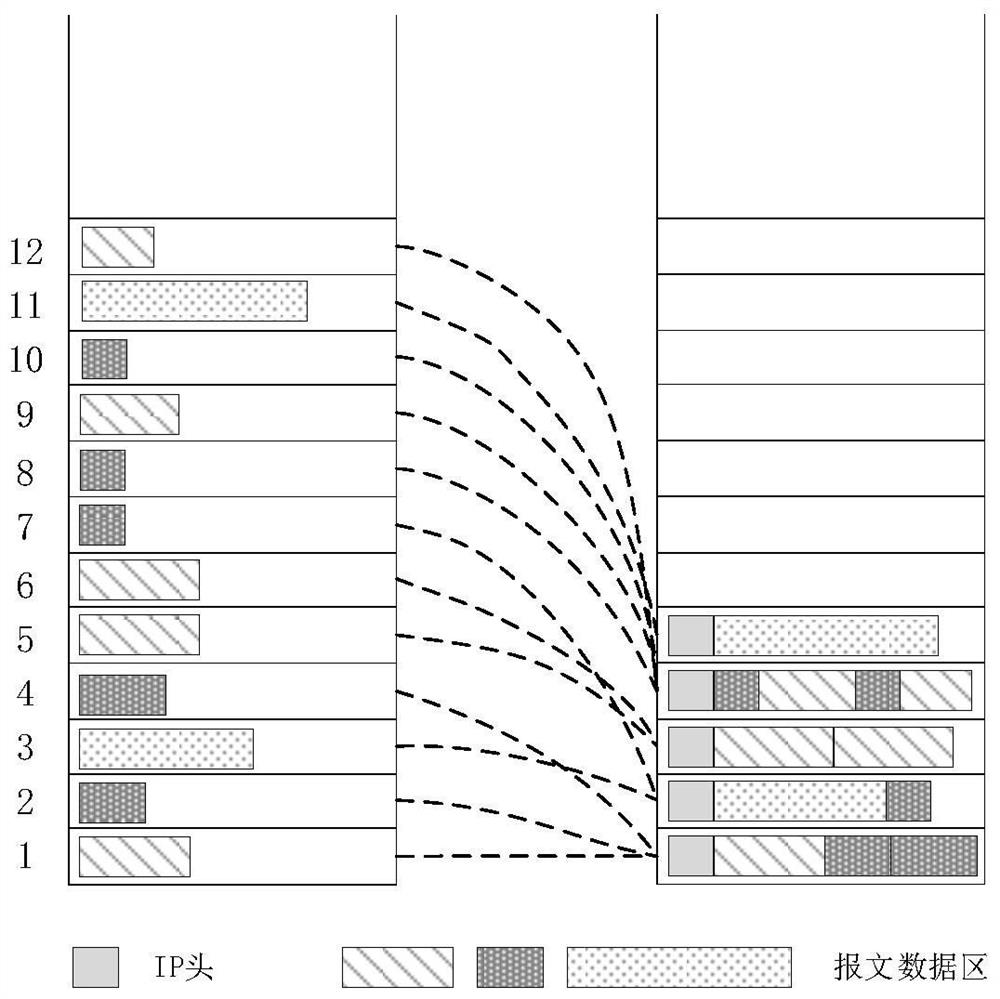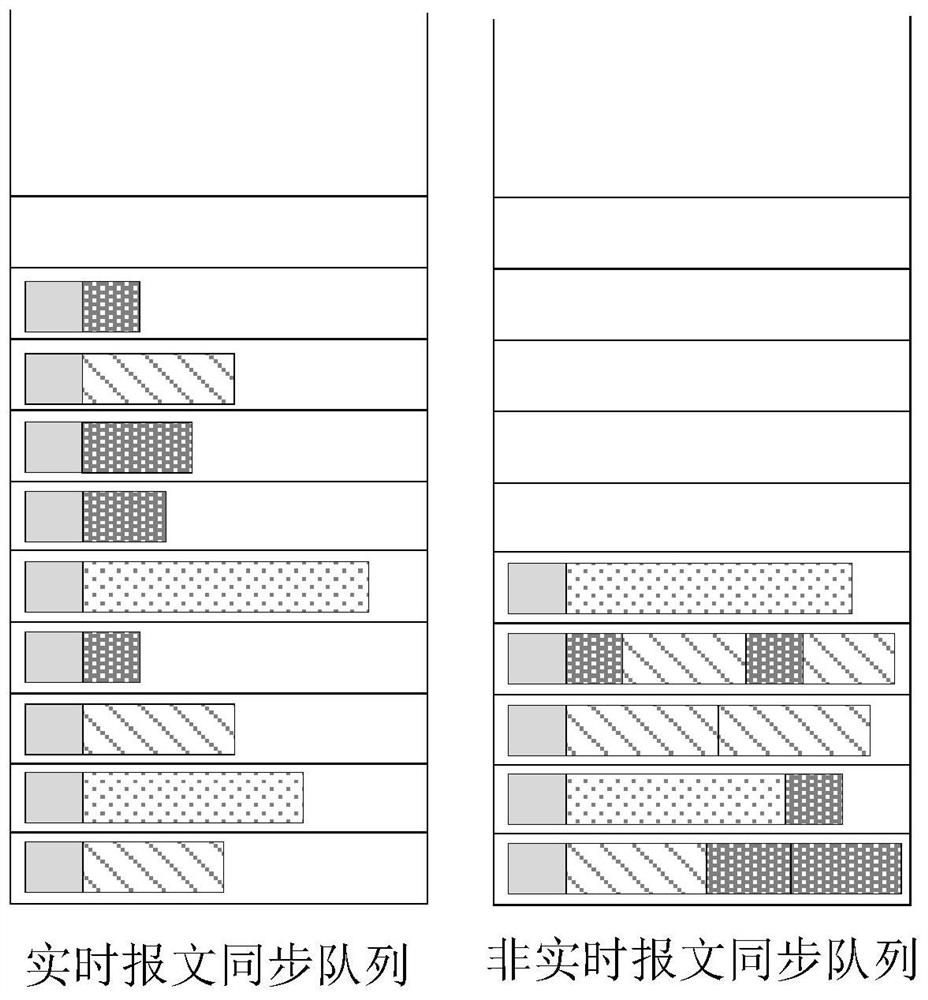Data message-oriented double-queue synchronization method, system and device, and storage medium
A technology oriented to data and message queues, applied in the communication field, it can solve the problems of reducing the synchronization frequency of non-real-time messages and IP header overhead, single-queue synchronization mode, and affecting the normal communication of other services.
- Summary
- Abstract
- Description
- Claims
- Application Information
AI Technical Summary
Problems solved by technology
Method used
Image
Examples
Embodiment 1
[0051] Distributed domain networks mostly use bandwidth-limited radio waves at the edge of the network to transmit and synchronize various types of data. During the construction and maintenance of wireless networks, a large number of small packet synchronization services will be generated. The data service of message type has the characteristics of large business volume and high synchronization frequency. In addition, there are differences in the real-time requirements of packet synchronization. On the one hand, a single queue synchronization method cannot meet the real-time requirements of some services. On the other hand, high-frequency synchronization will increase network synchronization overhead. In a bandwidth-constrained environment The normal communication of other businesses is affected.
[0052] In view of the above deficiencies, the main goal of this embodiment is to design a compatible dual-track synchronization solution for high time-sensitive services and low-tim...
Embodiment 2
[0092] A system of data message-oriented bidirectional queue synchronization method, the system includes
[0093] Obtaining a message parameter module, used to obtain a generated or received message parameter;
[0094] The message queue division module is divided into a real-time message queue and a non-real-time message queue according to the real-time requirements of the message;
[0095] The message storage module stores high time-sensitive messages into the real-time message queue based on the time-delay sensitive information identifier, and stores low time-sensitive messages into the non-real-time message queue;
[0096]The non-real-time message merging module uses a message merging algorithm based on dynamic programming for messages of the same destination node according to the message destination node identifier, and combines multiple non-real-time messages into IP message data in a protocol-predetermined manner area, share an IP header, and realize the merging and pac...
Embodiment 3
[0102] A computer device, comprising a memory, a processor, and a computer program stored on the memory and operable on the processor. When the processor executes the computer program, the following steps are implemented:
[0103] Obtain the parameters of the generated or received messages, and divide them into real-time message queues and non-real-time message queues according to the real-time requirements of the messages; store high-time-sensitive messages in real-time message queues based on delay-sensitive The text is stored in the non-real-time message queue;
[0104] For non-real-time messages, according to the message destination node identification, for the messages of the same destination node, the message combination algorithm based on dynamic programming is used to combine multiple non-real-time messages into the IP message data area in a protocol-predetermined manner , to share an IP header, realize merging and packaging of corresponding non-real-time messages, and...
PUM
 Login to View More
Login to View More Abstract
Description
Claims
Application Information
 Login to View More
Login to View More - R&D
- Intellectual Property
- Life Sciences
- Materials
- Tech Scout
- Unparalleled Data Quality
- Higher Quality Content
- 60% Fewer Hallucinations
Browse by: Latest US Patents, China's latest patents, Technical Efficacy Thesaurus, Application Domain, Technology Topic, Popular Technical Reports.
© 2025 PatSnap. All rights reserved.Legal|Privacy policy|Modern Slavery Act Transparency Statement|Sitemap|About US| Contact US: help@patsnap.com



